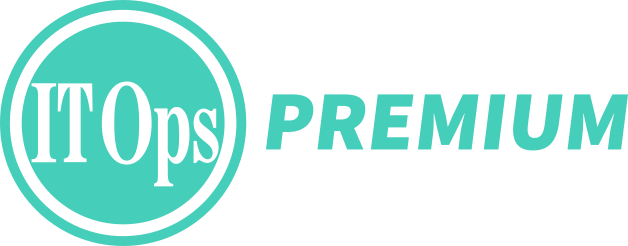
Today’s service providers are operating in an era of relentless digital evolution, a time when standing still means falling behind. As they navigate a brutal battleground of cutthroat competition and sky-high customer demands, continued innovation is a must. To ensure their growth and very survival, managed service providers (MSPs), communication service providers (CSPs), and telecommunication firms (telcos) must deliver exceptional network services that surpass rigorous demands of modern enterprises and foster unwavering customer loyalty.
However, the escalating complexity of network connectivity poses daunting challenges for service providers. These organizations must contend with surging bandwidth demands, the rise of cloud-based applications, and the intricate dynamics of hybrid and multi-cloud environments—which makes delivering flawless network experiences exceedingly difficult. Specifically, service providers must navigate growing client expectations for proactive network issue resolution and performance optimization, the ongoing challenge of generating new revenue streams by offering advanced and differentiated services, and the need to enhance operational and cost efficiency amid this rising network complexity.
Failures in network performance aren’t merely inconvenient; they introduce the risk of financial penalties, revenue losses, and, most critically, the erosion of customer trust. In a world in which network connectivity underpins digital experiences, robust network observability represents an essential lifeline. Network observability enables, service providers to maximize reliability, optimize performance, and deliver exceptional user experiences—solidifying their position at the forefront of an intensely competitive telecom and network services landscape.
Moving Beyond Traditional Network Monitoring: Embracing Observability
Traditional, reactive network monitoring solutions, once the backbone of service provider portfolios, are steadily losing their luster. These legacy solutions fall short in delivering the actionable insights needed to meet evolving network and client demands. They generate excessive, contextless alerts, leading to network operations inefficiencies, misallocated resources, and extended troubleshooting times. The result? Alert fatigue, disrupted workflows, and derailed service delivery—leaving providers ill-equipped to scale operations and meet evolving customer expectations.
To drive revenue growth and optimize costs, service providers must overcome the shortcomings of traditional network monitoring by pivoting to network observability—a transformative shift that empowers them to go beyond reactive “break/fix” models. By integrating cutting-edge observability tools into their service portfolios, they can preemptively tackle network issues before users are affected, fueling unparalleled visibility and reliability. This forward-looking strategy improves service quality and improves SLA compliance. With network observability, service providers can deliver differentiated, value-added service offerings that strengthen their competitive edge.
Network Observability: A Strategic Catalyst for Enhanced Service Portfolios
Network observability offers service providers a transformative edge, enabling them to redefine their portfolios, foster stronger customer loyalty, tap into new services revenue opportunities and optimize cost and operational efficiency. By adopting sophisticated and comprehensive observability solutions, MSPs, CSPs, telcos, and others can deliver advanced service offerings that tackle their clients’ critical challenges head-on.
Adopting a strategic approach to network observability empowers service providers to achieve these crucial goals:
- Enhance client value through proactive issue resolution, optimized performance, and exceptional user experiences.
- Unlock new revenue potential with premium, differentiated services.
- Boost operational efficiency by harnessing AI-enabled analytics, streamlining troubleshooting and accelerating error domain resolution.
- In an increasingly demanding market, observability isn’t just a competitive advantage—it’s a necessity.
Differentiated Services Enabled by Network Observability: A Competitive Edge
Network observability enables service providers to design tiered service packages that address the diverse needs and budgets of their clients. Through these offerings, service providers can harness AI-enabled, analytics-driven insights to do proactive network optimization. They can preemptively tackle performance bottlenecks, ensuring uninterrupted operations. Providers can also deliver enhanced user-experience services, leveraging complete visibility across network delivery paths to address potential degradations proactively. By leveraging network observability, providers can also deliver advanced services that help validate cloud connections. These services can help customers streamline the migration of business-critical services into the cloud, while ensuring SLA compliance. Service providers can also unlock new revenue streams by monetizing reporting and dashboarding capabilities that deliver actionable insights to customers.
The Business Case for Network Observability: Measurable Gains, Tangible Impact
To champion the adoption of network observability, product and offering leaders at MSPs, CSPs and telcos must quantify its business impact and demonstrate measurable benefits. To do so, they must track and report on a range of key performance indicators (KPIs). There are a wide range of metrics that can support these aims. For instance, by tracking client retention rates, they can assess how improved service delivery fosters customer loyalty. Revenue metrics can be used to assess added income realized from premium observability offerings. Gross margin reflects profitability gains that can be achieved from delivering differentiated services. Mean time to resolution (MTTR) metrics offers a way to assess speed and efficiency improvements in resolving network issues.
Resolution metrics can be used to demonstrate the success of preemptive actions in avoiding client disruptions, while customer satisfaction scores can be used to gauge the benefits of enhanced service quality. Monitoring alert fatigue can reveal how reducing unnecessary signals improves staff efficiency and satisfaction. Tracking employee productivity offers a way to measure the time saved through streamlined troubleshooting and triage workflows. These are just some of the metrics that can be used to demonstrate how network observability promotes reliability, revenue growth, and customer satisfaction in a competitive market.
Conclusion: A Path to Innovation and Competitive Advantage
Harnessing network observability has become a critical strategic advantage for MSPs, CSPs, and telcos striving to create differentiated, high-value services. Providing end-to-end visibility, advanced AI-enabled analytics, scalability, and high availability to meet the needs of service providers, enterprises, and government agencies alike.
Discover how advanced network observability can transform your service provider portfolio strategy. Be sure to download a white paper that offers actionable insights for service provider leaders, including offering managers, product managers, and business development managers. The paper reveals how these leaders can unlock new revenue streams, optimize cost efficiency, and drive service portfolios to new heights. Download the paper today.




